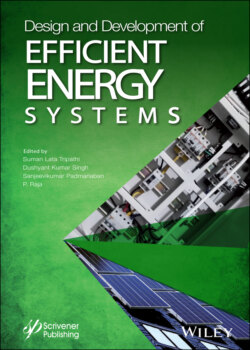Читать книгу Design and Development of Efficient Energy Systems - Группа авторов - Страница 17
1.5 Heavily Doped JL-DG MOSFET for Biomedical Application
ОглавлениеDG MOSFETs were designed with a nanogap cavity region as bio-sensor that can sense the bio-molecule present in the nanogap cavity [23, 24]. These bio-sensors work on the principle of dielectric modulation with the variation in bio-species present in the air (nanogap cavity) that further varies the electrical parameters of the device.
Figure 1.5 shows the 2-D view of JL-DG MOSFET with a cavity region. Here the cavity plays an important role to sense the bio-species present in air. The presence of bio-species and their concentration affect the dielectric constant of the cavity region that further affects the electrical parameters of transistor. The cavity region with different length (Lcavity) and height (Hcavity) shows varied device sensitivity towards the presences of biomolecules. This effect has been studied through varying dielectric constant with different materials such as air, SiO2, HfO2 and S3N4.
Figure 1.5 shows AJ-DG MOSFET with the nanogap cavity region. A thin SiO2 layer used for binding the molecules entering the cavity region by restricting the movements of bio-molecules. For the presented device the cavity region height (Hcavity) is 2.7 nm and SiO2 layer thickness is 0.3 nm. Another way to analyze device sensitivity is by introducing different types of charged particles in the cavity region.
In Figure 1.6 a sharp change is observed in the threshold voltages with the different dielectric constant of the material added in the cavity region. The longer cavity region length shows more variations in threshold voltage that results in the shifting of channel inversion threshold level. Therefore with a higher value of dielectric constant, the threshold voltage lowers. This shows that the device is highly sensitive towards the change in dielectric material constant depending on biomolecule presence resulting in electrical parameter variations.
A significant variation in threshold voltage is observed with a change in oxide thickness. The changing oxide thickness results in a change in the cavity region thickness that also affects the electrical parameter variations.
